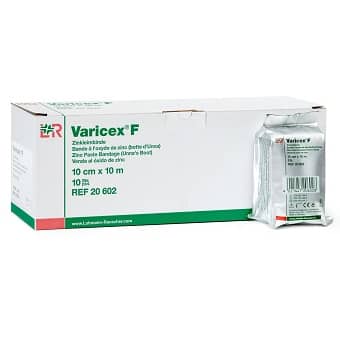Imagine changing your weight loss journey by adding more fiber to your meals. A high-fiber diet keeps you full longer. It also regulates digestion and blood sugar. You can lose weight by choosing healthier foods. Add fruits, vegetables, and whole grains. They will make your meals nutritious and satisfying. This guide will show you how fiber can help with weight management and health.

Table of Contents [hide]
- I. Understanding Fiber
- II. Benefits of a High-Fiber Diet for Weight Loss
- III. Tips for Incorporating Fiber into Your Diet
- IV. Step-by-Step Guide to Transitioning to a High-Fiber Diet
- V. Factors Influencing Effectiveness
- VI. Pros and Cons of a High-Fiber Diet
- What Should You Know Before Starting a High-Fiber Diet?
- FAQ
Key Takeaways:
-
Satiety: A high-fiber diet increases fullness. It reduces calorie intake.
-
Digestive Health: Fiber aids digestion and promotes bowel health. It helps detoxify the body.
-
Blood Sugar Control: Fiber slows sugar absorption. It helps keep blood sugar levels stable and reduces cravings.
I. Understanding Fiber
A high-fiber diet is important for effective weight loss and health. It aids digestion, stabilizes blood sugar, and keeps you full. This leads to eating fewer calories throughout the day. Eating fiber can help your body manage weight better.
1.1. Types of Dietary Fiber
There are two primary types of dietary fiber: soluble and insoluble. Each type plays a different role in your body:
| Type | Description |
| Soluble Fiber | Dissolves in water, forming a gel-like substance |
| Insoluble Fiber | Adds bulk to stool, aiding in digestion |
| Functional Fiber | Added to foods, isolated from plants |
| Total Fiber | Combination of dietary and functional fiber |
-
Soluble fiber can help lower cholesterol levels.
-
Insoluble fiber is beneficial for digestive health.
-
Both types are important for a balanced diet.
-
You should increase fiber intake in small amounts to achieve the best results.
-
Aim for a variety of fiber sources for optimal health.
1.2. How fiber affects the body

Knowing how fiber affects your body is important for weight loss. Fiber helps you feel full longer, which can lead to reduced calorie intake. It also regulates your digestive system, preventing constipation and promoting regular bowel movements.
It is well known that fiber helps with weight management. It affects satiety hormones and slows digestion, preventing blood sugar spikes. Eating fiber-rich foods in your meals usually cuts your calories. This is key for effective weight loss. Also, fiber can improve your eating habits. It helps you maintain a balanced diet over time.
II. Benefits of a High-Fiber Diet for Weight Loss
A high-fiber diet has many benefits. One is its power to aid weight loss. Eating fiber-rich foods can improve digestion. They can also help you feel full and ease hunger. This diet helps you make healthier food choices. It also helps you balance your calorie intake. This will aid your weight loss.
2.1. Increased Satiety

Some evidence suggests that a high-fiber diet boosts satiety. It makes you feel full for longer. Eating more fiber makes it expand in your stomach. This delays emptying and reduces cravings. Eating fiber-rich foods can help manage your appetite. This lets you eat fewer calories.
2.2. Regulated Blood Sugar Levels
Fluctuating blood sugar can increase hunger and cravings. This makes it hard to stick to your weight loss goals. A high-fiber diet stabilizes blood sugar. It slows sugar absorption into your bloodstream. This steadiness means fewer energy spikes and crashes. It reduces impulsive snacking and overeating.
Regulated blood sugar levels also support your metabolic health. When your blood sugar is stable, your body can use stored fat for energy. It does not have to rely on quick sugar sources. It helps with weight loss. It also boosts energy and focus.
III. Tips for Incorporating Fiber into Your Diet
Many people struggle to add fiber to their diets. But a few simple changes can make this easy. Start by incorporating whole grains, fruits, vegetables, and legumes into your meals. You can make it a habit to:
-
Choose whole grain products over refined ones.
-
Add beans or lentils to soups and salads.
-
Snack on fresh fruits and vegetables.
-
Mix chia seeds or flaxseeds into smoothies and yogurt.
-
Experiment with fiber-rich recipes to keep things interesting.
Seeing fiber as a tasty addition, not a chore, will help you stick to these habits.
3.1. Choosing high-fiber foods
A fiber-boosting diet should focus on high-fiber, nutrient-dense foods. Focus on natural sources like fruits, vegetables, whole grains, and legumes. Some excellent choices are raspberries, pears, oats, quinoa, and chickpeas. They are all high in fiber and nutrients. Diversifying your fiber sources can make meals exciting. It can also help you lose weight.
3.2. Meal Planning Strategies

You can add more fiber to your meal planning. Prepare balanced meals ahead of time. Plan your week so each meal has a fiber-rich component. Use grain bowls, hearty salads, or vegetable stir-fries. Whenever possible, batch-cook meals using legumes and grains to streamline your eating process.
Understanding how to plan your meals can lead to a much greater increase in your fiber intake. Dedicate one day a week to plan your meals. Include at least one high-fiber dish in each meal. Use grocery lists to ensure you’re stocking up on the right ingredients. Also, try new recipes that use fiber-rich foods. This will give you plenty of options during the week. Variety will please your palate. It will also help you stick to a high-fiber diet.
IV. Step-by-Step Guide to Transitioning to a High-Fiber Diet
Now, shifting to a high-fiber diet can be easy and rewarding when you follow these simple steps:
| Step | Description |
|---|---|
| 1. Start Slow | Introduce fiber gradually to avoid digestive issues. |
| 2. Choose Whole Foods | Opt for whole grains, fruits, and vegetables. |
| 3. Read Labels | Check food labels for fiber content. |
| 4. Meal Prep | Plan meals to include fiber-rich foods. |
4.1. Gradual Increase in Fiber Intake
Increase your fiber in small increments. Add more fruits, vegetables, legumes, and whole grains to your meals. This gradual method helps your digestive system adjust without discomfort. Aim to add a small portion of fiber-rich foods each day until you reach your goal.
4.2. Importance of Hydration

Not possible to remove the adverb. More fiber can cause digestive discomfort if you don’t drink enough water.
A well-hydrated body helps fiber move through your gut. This prevents constipation and bloating. Aim to drink plenty of water throughout the day, especially as you increase your fiber intake. Drink at least eight 8-ounce glasses of water daily. You may need more, depending on your needs and activity level.
V. Factors Influencing Effectiveness
Not all high-fiber diets yield the same results for weight loss. Several factors can influence their effectiveness, including:
-
Type of fiber consumed
-
Your caloric intake.
-
Physical activity level
-
Your metabolism
These elements affect how much high fiber can help you lose weight.
5.1. Individual Differences
Assuming everyone responds to dietary changes in the same way can be misleading. Genetic factors, metabolism, and food preferences affect weight loss on a high-fiber diet.
5.2. Overall Nutritional Balance

Influencing weight loss relies on more than fiber intake. A balanced diet with various nutrients is key to your health goals.
It’s vital to pair fiber-rich foods with proteins, healthy fats, and a mix of vitamins and minerals. This gives the best health benefits. This balance can prevent deficiencies. It can also keep your energy up while you lose weight. Using diverse foods will help you make meals that please, nourish, and fill you.
VI. Pros and Cons of a High-Fiber Diet
To check a high-fiber diet, we must weigh its pros and cons. Below is a breakdown of the pros and cons involved.
| Pros | Cons |
| Promotes satiety | May cause digestive discomfort |
| Supports weight loss | Requires gradual dietary adjustments |
| Aids digestive health | Possible gas and bloating |
| Low in calories | Potential nutrient deficiencies |
| Improves blood sugar control | Limited food choices |
6.1. Advantages for Weight Loss
A high-fiber diet can aid weight loss. It boosts fullness, so you eat fewer calories over time. Soluble fibers slow digestion. They boost energy and reduce hunger. This helps you manage portions and stick to your weight goals.
6.2. Potential Challenges

A sudden increase in fiber might cause gas or bloating. A high-fiber diet requires you to watch for your body’s reaction to the changes.
Also, if you eat low-fiber foods, you might struggle to adjust to a high-fiber diet. It’s vital to increase your fiber intake in small amounts to allow your digestive system to adapt. Staying well-hydrated can help cut discomfort and help with this transition. Also, a varied diet gives you vital nutrients. So, eat a range of fiber-rich foods to support your health and weight loss.
What Should You Know Before Starting a High-Fiber Diet?
A high-fiber diet aids weight loss. It keeps you full for longer. It also reduces calorie intake and stabilizes blood sugar. Eating more fiber-rich foods can improve your digestion. It can also lower cholesterol. Plus, it helps you feel full and avoid unhealthy snacks. This diet helps with weight management and boosts your well-being. So, it’s a good choice for lasting health.
FAQ
Q: Why is a high-fiber diet effective for weight loss?
A high-fiber diet aids weight loss. Fiber-rich foods are low in calories and high in volume. You can eat larger portions without too many calories. This can make you feel full and satisfied, which may reduce your food intake.
Q: How does fiber help regulate appetite?
Fiber slows digestion. This helps regulate blood sugar and prolongs fullness. High-fiber meals prevent blood sugar spikes and crashes. This reduces hunger and the urge to snack.
Q: Can a high-fiber diet improve digestive health, and how does that relate to weight loss?
Yes, a high-fiber diet promotes digestive health. It aids regular bowel movements and prevents constipation. Healthy digestion is key for nutrient absorption and metabolism. It can aid weight loss by optimizing the body’s functions.
Q: Are all types of fiber equally beneficial for weight loss?
Not all fiber is the same; there are soluble and insoluble fibers. Soluble fiber in foods like oats and legumes can lower cholesterol and stabilize blood sugar. Insoluble fiber, in whole grains and vegetables, adds bulk to meals and aids digestion. A combination of both types tends to be the most effective for weight management.
Q: What are some high-fiber foods I can incorporate into my diet for weight loss?
Some excellent fiber sources are fruits (like berries and apples), vegetables (like carrots and broccoli), whole grains (like quinoa and brown rice), legumes (like beans and lentils), and nuts and seeds. Eating a mix of these foods can help you meet your fiber goals. It can also support your weight loss journey.






One thought on “Why is a high-fiber diet effective for weight loss?”